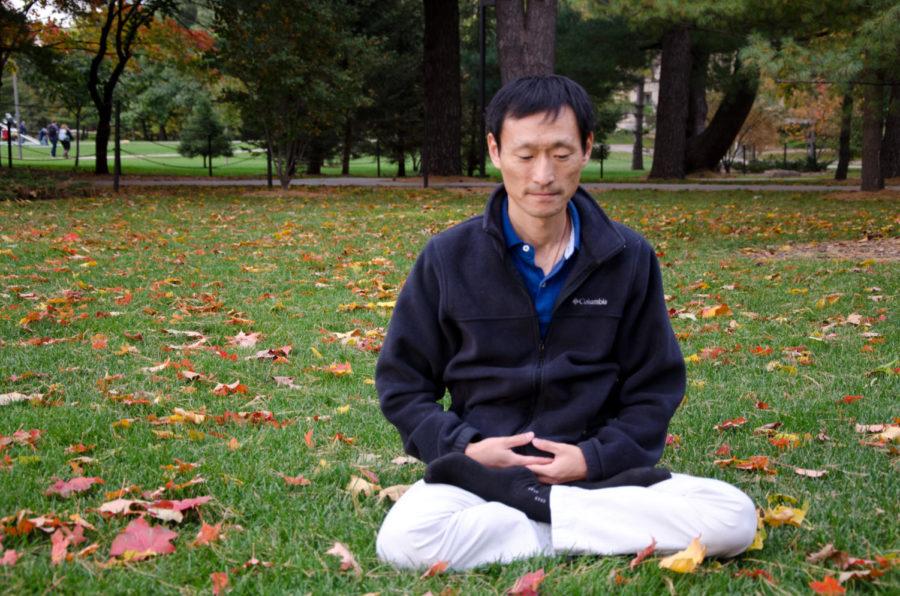Use meditation techniques to ease midterm frustration, stress
Columnist Grayson Goss recommends college students take advantage of meditation, arguing that the practice helps with stress, sleep and creativity.
October 15, 2014
Midterm week is upon the campus, and so is the stress that many students face while studying for exams among their already busy schedules.
The stress is apparent throughout Parks Library with students’ faces buried into textbooks. In the midst of the busy college life, it can be difficult for students to balance their busy class schedules, work and various other student clubs and activities while trying to make time to study for an exam.
The presence of midterms on campus does not worry Connor Bright, senior in psychology and president of the Dizang-Qi Buddhism Club. He said the Buddhist practice of meditation has helped him deal with stress in his life.
“The worst thing about my major is that all my midterms are night exams,” said Sean Gay, freshman in meteorology. “I was pretty stressed, I had class all day and then night exams, and I was working. I was staying up really late at night and wasn’t getting very much sleep.”
Gay said that some of the things he does to calm stress is to try to get plenty of sleep, take 15 minutes to call a friend and even taking time after exams to relax and catch up on a favorite TV show. But he had never thought of using meditation as a way of dealing with stress. He said meditation confused him. When he tried to sit in quiet and not think about his stress, he ended up thinking about everything even more, making him more stressed out then he already was, he said.
“Most people think about [meditation] in the wrong way,” Bright said. “They think that they can just sit down and shut themselves up [to calm stress], but that’s not what you do. You have to develop this concentration and this focus.”
Jie Shao, a sales manager at Lihuatech Co. Ltd and a supportive member of the club, said he tries to put himself in other people’s shoes and be open to helping others when it comes to dealing with stress. He thinks the Buddhist meditation method helps with stress and can help others.
“I don’t want suffering, and at the same time others do not want suffering,” Shao said. “If suffering is not good, then we should help them eliminate their sufferings too. This is the reason [Buddhists] often do analytical meditation, to understand why we should give people love and kindness.”
A couple of the meditation techniques practiced in the club are Samatha, which focuses on a single point, such as breath, and helps to calm. Another is Vipassana, or seeing reality as it really is by self-observing how the body physically senses and how those senses connect to the mind.
“We focus on the mind. The purpose is to improve mind quality,” Shao said.
Observing the feeling of stress can help prevent people from acting out in hostility.
“Suppression is different than observation,” Bright said. “Feelings are not in control of you. You are in control of them.”
During the year, the Buddhism club meets on Saturdays to learn about Buddhism and practice meditation techniques. The club is open to all students, because mediation is a secular practice. While practicing meditation, the members are asked to be patient while they learn. One of the doctrines Buddhism is based on is called anatta, the practice of no-self. Shao said the idea of no-self is not only to love God, but to love his creation as well.
“No self does not mean no self-esteem.” Shao said.
Midterms can be daunting and seem like they will never end. But Bright and Shao urge students consider meditation as a stress relief option.
“It’s not all about how you meditate, it’s more about putting in a good amount of effort,” Bright said. “[Meditation] is a long term thing. It changes how you interact with the world around you.”
If students have any questions concerning meditation or the Dizang-Qi Buddhism Club, they can contact Conner Bright at cwbright@iastate.edu or go to student clubs on the Iowa State website.







